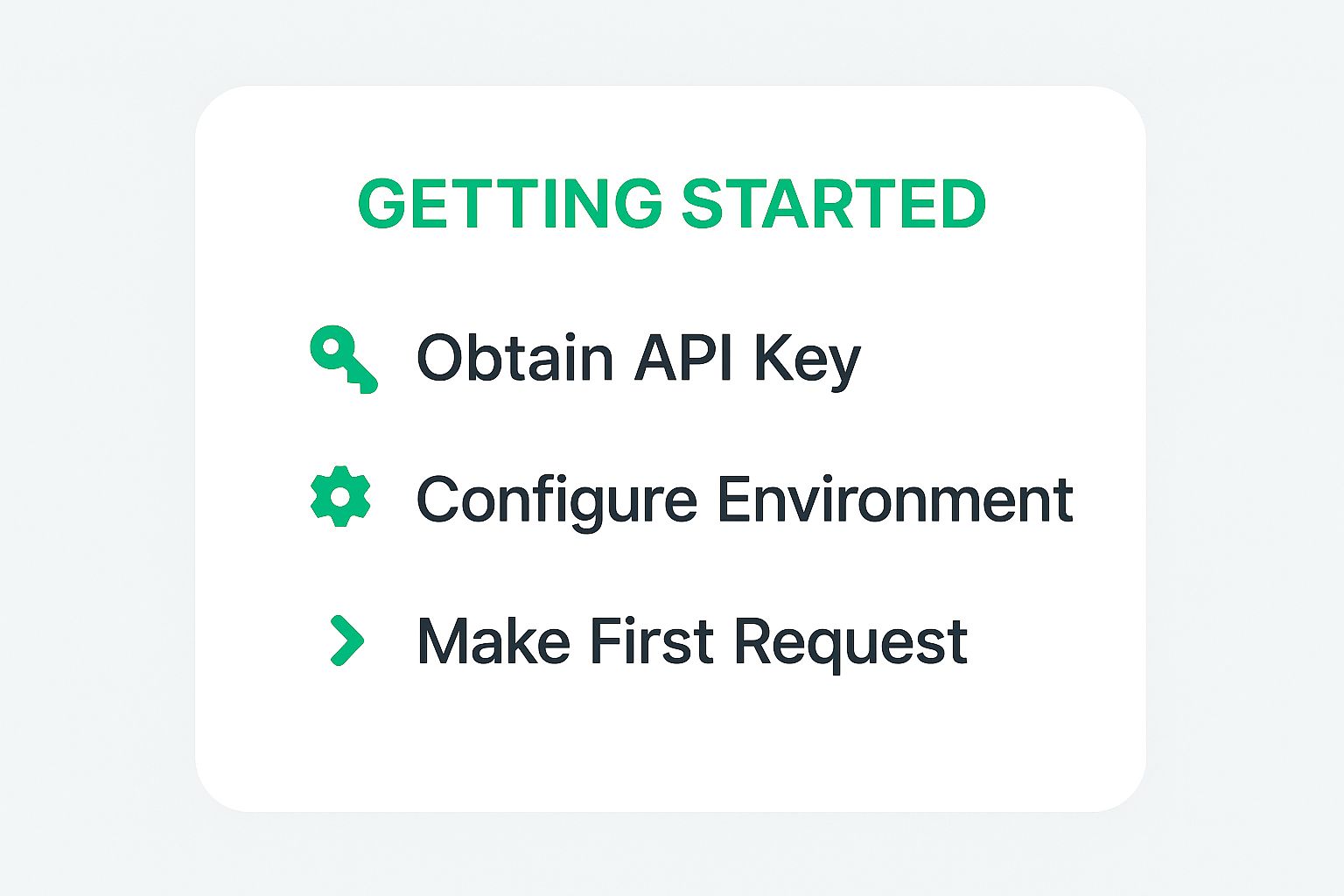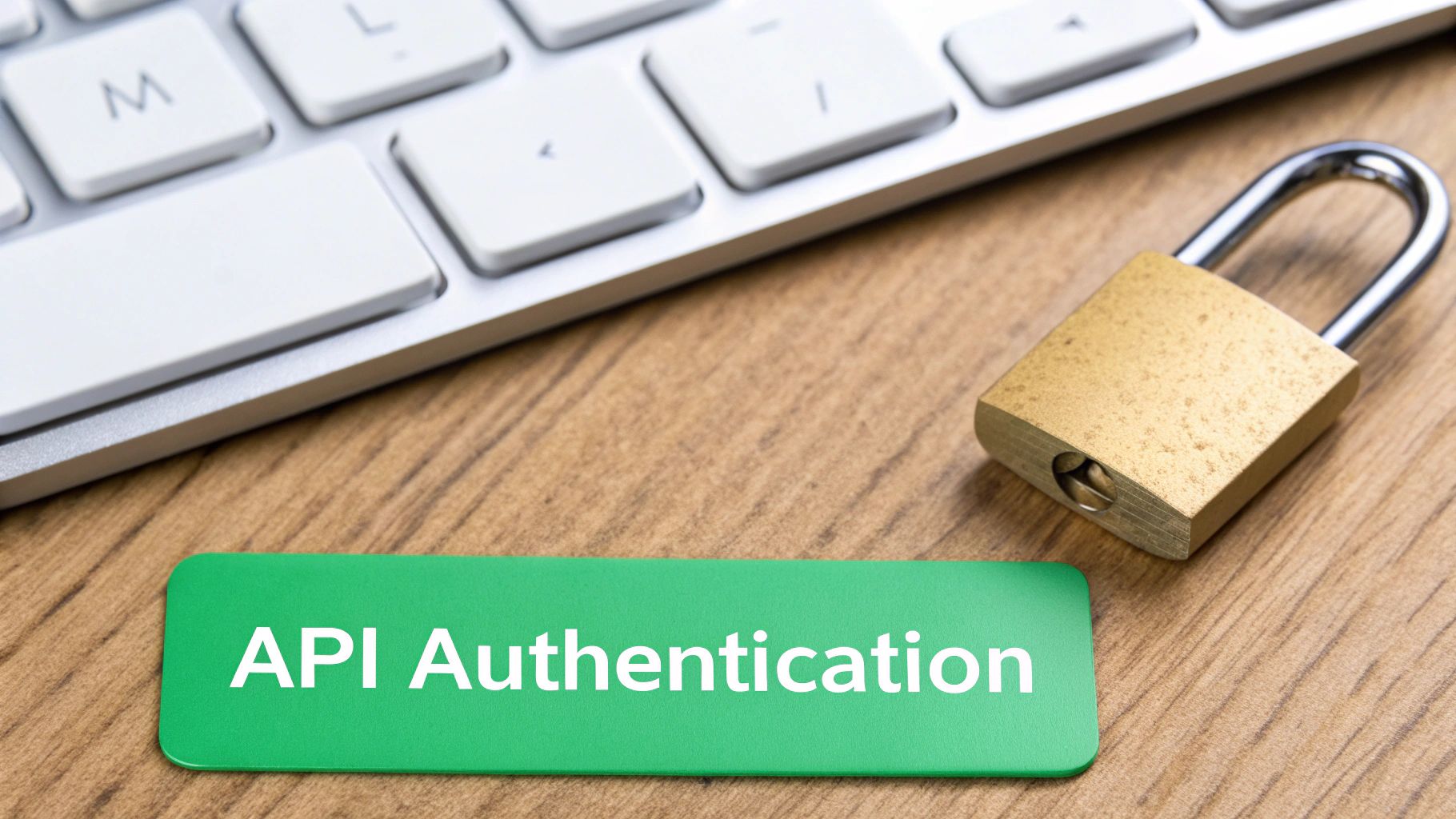Learn how to create effective API documentation templates with our comprehensive guide. Boost adoption and streamline support with clear docs.

In the fast-paced world of software development, developers often judge your API by the quality of its documentation. Think of it like a restaurant menu. A confusing or incomplete menu can send diners elsewhere. Similarly, poor API documentation can lead developers to abandon your API for a competitor’s. This first impression is crucial for developer adoption.
A well-designed API documentation template provides a structured way to present complex information clearly. This allows developers to quickly find what they need, understand how to use your API, and integrate it efficiently. Companies like Stripe, known for their clear and user-friendly API documentation, demonstrate the power of good documentation in driving adoption.
This positive impact extends beyond initial impressions. A good template influences the long-term success of your API. Poor documentation can result in more support tickets, frustrated developers, and ultimately, missed opportunities.
A well-maintained and easy-to-use template, however, fosters a thriving developer community. This leads to faster integration, broader adoption, and increased business growth. It also reduces integration errors, saving time and resources for both developers and your support team.
One significant trend underscores this importance: the increasing focus on clarity and usability in API documentation. By 2025, effective documentation is projected to reduce integration issues by up to 30% and cut onboarding time by 50%. Poor documentation, conversely, can lead to more support requests and slower adoption. For further insights, explore these API documentation examples.
Inadequate API documentation can have significant and costly consequences. Here are some key challenges:
Investing in a high-quality API documentation template can transform a potentially frustrating developer experience into a seamless integration process. This fosters faster adoption, reduces support costs, and ultimately, drives business growth. A well-documented API is more appealing to developers, leading to a thriving ecosystem and increased market share.
Effective API documentation is essential for developer success. It’s not just about listing features; it’s about guiding developers from initial exploration to successful integration. Understanding what information developers need and how they learn best is key.
Most developers begin by looking at how to get started. A clear, concise “Getting Started” section is crucial. This section should cover initial steps like obtaining API keys, setting up the environment, and making the first request.

The infographic above highlights the core components of a good “Getting Started” section. These steps allow developers to quickly experience the API’s core functionality, setting the stage for more complex integrations. Early success builds confidence and encourages further exploration.
Beyond initial setup, developers require comprehensive documentation covering all aspects of the API. This includes clear authentication explanations, detailed endpoint descriptions, and helpful error messages.
This approach empowers developers to effectively use the API. For more details, see our guide on how to write comprehensive API documentation.
Presenting information effectively is as important as the information itself. Organize documentation logically using clear headings, subheadings, and consistent formatting.
A well-structured template allows developers to find information quickly. The goal is to create a user-friendly experience that promotes successful API integration.
To further illustrate best practices, the following table outlines essential API documentation components:
The table below provides a comprehensive breakdown of critical sections every API documentation template should include, complete with priority levels and implementation tips.
Essential API Documentation Template Components
This table summarizes key elements for creating effective API documentation. By focusing on these components, you can ensure a positive developer experience and promote successful API integration.

Effective API documentation is essential for developers. Choosing the right tools for creating and maintaining your API documentation template can significantly impact its success. The right tools can streamline your workflow and ensure accuracy. Conversely, the wrong tools can lead to frustration and wasted time. Finding the right balance between simplicity and robust features is key.
Just like a chef needs the right kitchen tools, you need the right software to create successful API documentation. Consider these key factors when evaluating potential tools for your API documentation template.
A wide variety of API documentation tools exists, each with its strengths and weaknesses. Some are ideal for simple projects, while others offer advanced features for complex APIs. Using specialized tools has become increasingly common, helping teams maintain accuracy and streamline onboarding. Tools like Swagger UI, Redoc, and Postman have gained popularity for their OpenAPI support, customization options, and interactive testing features. Discover more insights about these tools. In 2025, these tools are continuing to lead the way in API documentation.
The following table compares some popular choices:
Consider both current needs and future scalability when evaluating these options. A tool that works well for a small project might not be suitable for a growing API with a larger developer community. Thinking ahead can prevent future migration challenges.
Also, assess the technical requirements of each tool. Some may have specific software or configuration dependencies that could impact your development workflow. Careful consideration of these factors helps you choose the tools best suited for creating and maintaining high-quality API documentation that empowers developers and promotes wider API adoption. Equipping developers with the right resources is the ultimate goal.

Static code examples simply don’t cut it anymore. Today’s developers want interactive experiences that allow them to test and tinker. An API documentation template with interactive elements offers a real advantage, boosting comprehension and smoothing out the integration process. It turns passive reading into active learning.
Good code examples are essential for showcasing how your API works. These examples need to be both comprehensive and easy to grasp, appealing to seasoned developers and beginners alike. Focus on practical, real-world applications without overwhelming users with unnecessary details.
For instance, instead of just a basic API call, show how to handle common tasks like pagination or error handling. This practical demonstration helps developers see how they can actually use the API in their projects.
Offering code examples in multiple programming languages significantly expands your API’s potential audience. This inclusivity encourages wider adoption. Addressing edge cases within your examples also demonstrates robust error handling and builds trust with developers.
This involves anticipating potential problems and providing solutions within your documentation. Clearly explaining how to manage errors or unexpected inputs reduces developer frustration and streamlines the integration process.
Sandbox environments let developers experiment safely without affecting live data. These interactive playgrounds provide a risk-free way to test API calls, adjust parameters, and explore different use cases. This hands-on experience accelerates learning and encourages deeper engagement with the API.
Consider platforms like CodeSandbox or similar tools to let developers interact directly with your API within the documentation itself. This provides instant feedback and empowers developers to explore the API’s capabilities. Interactive documentation leads to faster adoption, fewer support requests, and a more vibrant developer community. This all translates into a more successful and widely used API. By incorporating these strategies into your API documentation template, you’ll equip developers with the tools they need to succeed, cultivating a thriving ecosystem around your API.
Beyond simply meeting developer needs, your API documentation template directly affects your bottom line, partnerships, and market competitiveness. High-quality documentation is a strategic business asset, not just a technical afterthought.
Well-crafted documentation is essential for achieving key business goals. For instance, it can significantly speed up partner integrations by offering the resources needed for smooth onboarding. This quicker time-to-market translates into faster revenue and stronger partnerships.
Robust documentation also reduces support costs. When developers quickly find answers in the documentation, they’re less likely to contact your support team. This frees up your team to handle complex issues and lowers overall support expenses.
Comprehensive API documentation fosters thriving developer ecosystems by creating a positive developer experience. A supportive and engaged community around your API leads to increased innovation, wider adoption, and valuable feedback, strengthening your market position.
There’s a clear connection between documentation quality and API adoption rates. Developers are more inclined to choose and continue using APIs that are easy to understand and integrate. Think of your documentation as your API’s storefront – a welcoming and organized storefront attracts more customers.
Companies like Stripe and Twilio gained a competitive edge through great developer experiences driven by excellent documentation. Their consistent investment in clear, comprehensive, and user-friendly documentation contributed significantly to their success, building developer loyalty and driving widespread API adoption.
The rising use of APIs in the digital economy fuels the demand for comprehensive API documentation. Organizations increasingly integrate APIs into their value chains. This necessitates detailed documentation, including user guides, service level agreements, and support resources, to ensure smooth operations.
By 2025, using external APIs for digital product development became even more common, with APIs often acting as complete products within organizational workflows. Explore this topic further. This highlights the importance of high-quality API documentation for seamless integrations and customer satisfaction.
Forward-thinking organizations understand that API documentation is a strategic asset, not just a technical necessity. It’s an investment that fuels growth, strengthens market position, and creates a lasting competitive advantage. Investing in a solid API documentation template sets the stage for long-term success.
Creating a solid API documentation template is only the beginning. Keeping it accurate and relevant requires ongoing effort and a strategic approach. Think of your documentation as a living document that needs regular care, much like a garden that thrives with consistent nurturing.
Effective teams weave documentation updates directly into their development process. This proactive approach prevents documentation from becoming stale. Just as code undergoes rigorous testing and review, your documentation should be treated with the same level of scrutiny.
Maintaining consistent formatting and style across your API documentation is essential for clarity and readability. Automated tools can help enforce these standards, freeing up valuable time.
As your API evolves, so should your documentation. A long-term strategy involves versioning and proactively managing changes. For more in-depth guidance, check out this helpful resource: building developer-friendly API documentation.
To help illustrate various maintenance approaches, consider the following comparison:
Documentation Maintenance Strategies Comparison: A detailed comparison of different approaches to maintaining API documentation templates, including automation levels, resource requirements, and effectiveness.
This table highlights how different levels of automation and resource investment correlate with maintenance effort. Choosing the right approach depends on the project’s size and the frequency of API changes.
Maintaining accurate and current API documentation is an ongoing commitment. By implementing these strategies, your API documentation template becomes a valuable asset for developers, fueling the long-term success of your API. This cultivates a thriving developer community, boosts adoption, and ultimately drives growth. Investing in a solid documentation maintenance system yields significant long-term rewards.